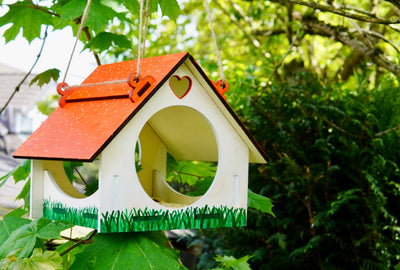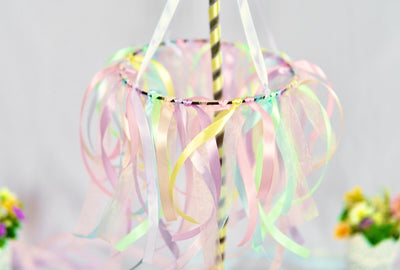Gluing acrylic: Mr Beam unlocks the secret of correct gluing
Dear crafting genius, do you know that too? Do you have a visionary project in mind that revolves around the dazzling material acrylic, but connecting the acrylic panels turns into a stuffy drama? Don't worry, you're not alone when it comes to gluing acrylic . Even professional craftsmen and hobbyists know the pitfalls of acrylic gluing. With this article we, Mr Beam, would like to offer you the complete guide to gluing acrylic correctly. The path to acrylic artwork is less of a wrong path and more of an art that needs to be mastered.
The importance of preparation: first prepare, then apply
First: gluing is not just gluing. In a time when DIY projects are flourishing, it would be easy to assume that gluing acrylic is as easy as folding paper aeroplanes. But the reality is a little more complex. A clean cut, a degreased surface and the right tools are the first step to success. You could say: the preparatory work is half the battle. But that's not all: degreasing is not only a mandatory exercise, but also crucial for the durability of the connection. Contamination can significantly reduce the adhesive strength and cloud the overall result. For this purpose, special degreasers or alcohol are used when gluing acrylic. In addition, fine-grain sandpaper is useful for slightly roughening the surfaces to be glued and thus improving adhesion. With this careful preparation, you will create the ideal basis for a clean and lasting cohesion of your acrylic project.
Which glue is particularly suitable for acrylic?

Choosing the glue is an art in itself. The market offering of adhesives is overwhelming, from superglue to epoxy, but not every adhesive is suitable for acrylic. For an almost invisible connection, we recommend special acrylic adhesives that form a chemical bond with the material. These adhesives allow the acrylic to fuse to itself and do not create a mechanical barrier like other adhesives do.
Cyanoacrylate glue or so-called “two-component glue” is the first choice when gluing acrylic. These adhesives fit perfectly into the molecular structure of the acrylic and ensure a permanent, almost invisible connection. It should be noted that these adhesives dry very quickly, leaving little room for error. Another key advantage is that these specialized adhesives are often UV-resistant. This means they do not yellow under the influence of sunlight, which is particularly beneficial for outdoor projects or works of art placed in bright rooms.
The art of application: Less is more

When using the glue, the golden rule applies: less is more. Too much glue leads to unsightly bubbles that appear in the material and affect the appearance of your project. In order to achieve an even layer when gluing acrylic, it is recommended to use an applicator or a fine brush. An even, thin layer of adhesive between the acrylic panels contributes to the aesthetic completion of your project.
However, this technique requires a practised hand and some experience. It is therefore advisable to carry out some tests before the actual project to perfect the application of the glue. Observing the dry season is also crucial. Pressing the parts together too quickly can prevent the adhesive from developing its full adhesive strength. Conversely, waiting too long means that the adhesive has already dried on the surface but was not able to penetrate deeply enough into the material. The perfect balance between quantity and timing is the key to a successful end result.
The moment of truth: pressing and curing

After you have carefully applied the glue, the moment of truth comes: pressing the parts together. In this step, precision is the key to success. Use clamps or a special device to hold the acrylic pieces in the ideal position. Depending on the adhesive used, the curing time may vary. During this time, patience is your best friend.
You should definitely avoid the following mistakes when gluing acrylic:
- Uneven Compression: If parts are not compressed evenly and tightly, this can result in an insecure connection
- Not paying attention to the curing time: Each adhesive has its own curing time, which must be strictly observed. Curing for too short or too long affects the quality of the connection
- Using the wrong glue: Not every glue is suitable for acrylic. Using an unsuitable glue will result in a weak bond and possible damage to the acrylic parts
- Unclean work surface when gluing acrylic: A dirty or dusty work surface causes impurities in the glue, which reduce the quality of the connection
- Unprepared Surfaces: Failure to properly prepare acrylic surfaces can result in the adhesive not adhering properly and the bond becoming weak
Your path to becoming an acrylic master: The quintessence of successful gluing
Acrylic gluing is less of a mundane task and more of an art form that requires patience, care and the right material. It begins with the perfect preparation and ends with the triumphant moment when you hold your finished acrylic artwork in your hands. And the most important player on this stage of craftsmanship is the right glue.
With the right preparation, the right glue and careful technique, your next acrylic project is sure to be a complete success. Please have a look at our YouTube video. And remember: mastering acrylic gluing is a process, so don't be too hard on yourself if everything doesn't go perfectly right away. Good luck with your next project, and remember: Mr Beam is always available to help and advise you.



